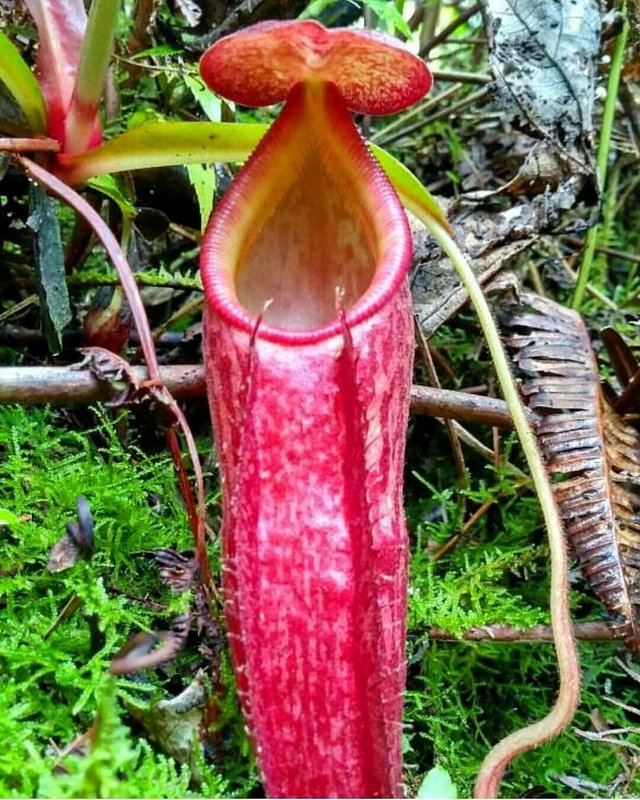Nepenthes, Gunung kembang, Wonosobo

Semar bag becomes a sign of high rainfall in that place. It is a Nepenthes genus consisting of at least 135 species. This plant lives epiphytically or attached to the stems or branches of other trees. In Indonesia, most habitats are in Kalimantan and Sumatra. Semar bags began to be favored as an ornamental plant.
Semar bag for mountain climbers, no stranger. Plants whose pockets are still closed to be a source of fresh water for the lovers of this wild. However, do not try to drink water from open pockets, sour taste and insect carcasses have contaminated the water in the bag.
The semar bag is the name of the plant that belongs to the genus Nepenthes (English: tropical pitcher plant). It belongs to the monotypic family. Some species of Nepenthes include hybrids or artificial ones. Nepenthes is a carnivorous plant in the tropics that includes Indonesia, southern China, Indochina, Malaysia, the Philippines, western Madagascar, Seychelles, New Caledonia, India, Sri Lanka and Australia.
In Indonesia there are at least 85 species of semar bags. Habitat with most species in Kalimantan and Sumatra.
This plant can reach a height of 15-20 m by climbing another plant. However, there are some species that do not climb. At the tip of the leaf there are vines that can be modified form a pocket, the trap tool used to eat prey. For example, insects, pacet, frogs. They are caught in the bag because they are attracted by the smell.
Generally, Nepenthes has three kinds of pockets, the top pockets, the bottom pockets, and the rosette pouch. The upper bag is a bag of mature plants, usually in the shape of a funnel or cylinder. The upper pockets often catch flying animals such as mosquitoes or flies, they are rarely even found in some species, for example N. ampullaria.
The bottom pockets are pockets that are generated on the part of young plants that are usually lying on the ground, have two wings that serve as aids for soil insects such as ants to climb the mouth of the pouch.
The rosette bag, similar to the bottom pocket, but this bag grows on the rosette-shaped part of the leaf, for example, N. ampullaria and N. gracilis. Some plants sometimes remove a central bag that is shaped like a mixture of lower pockets and top pockets.
When the leaves are young, the bag of predators in the semar bag is closed. Pockets open as adults. When eating the prey, the bag is closed, so the digestion process is not disturbed.
Pouch hole lips equipped with a con artist. Colored red and able to spread the scent of lure and make unauthorized prospective prey. When he was careless, he slipped into a slim semar bag. Then the acidic liquid, proteolase enzyme, digests the prey into phosphate and nitrate salts.
The spread of the bag semar is very wide, from the beach up to the plateau. Thus, the bag of semar is divided into two types, namely the type of plateau and lowland type. However, most species grow in the highlands. The recorded species grew at the highest altitude was N. lamii ie at an altitude of 3,520 m.
Most species live in high humidity and medium to high light environments. Species like N. ampullaria grow in the shade. Instead, N. mirabilis grows with abundant light. The land where Nepenthes grow is usually nutrient-poor and sour. Some species grow in places that are highly toxic to other plants such as N. rajah that grow on soils with heavy metal content. N. albomarginata grows on sandy beaches in exposed zones of sea water. N. inermis grows without touching the soil.
Source image and source story :(urban hikers)